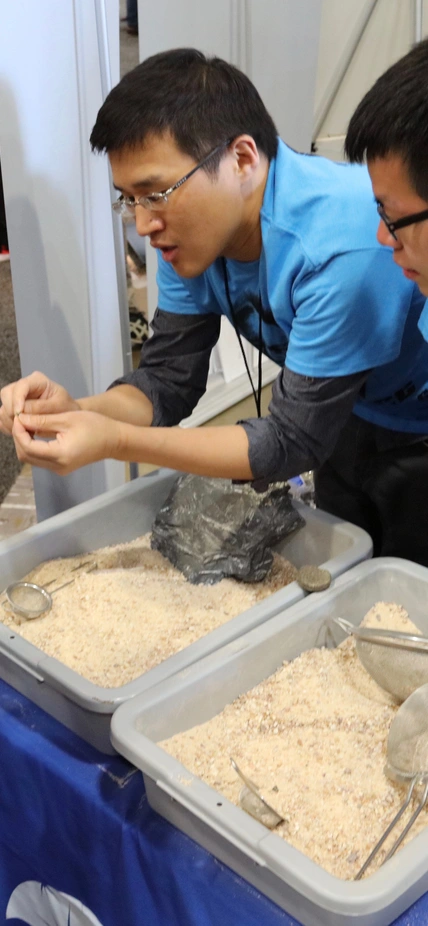For anyone who stopped by the Carnegie booth at the USA Science & Engineering Festival this weekend, the answer to all of those questions would be a resounding “yes!”
More than 40 volunteers from four departments, including scientists, Carnegie Academy for Science Education educators, and administrative staff, welcomed thousands of the estimated 350,000 Festival visitors to our booth with a range of fun, interactive science. Some volunteers even brought their families along to lend a hand!
“Thank you so much to everyone at Carnegie who came out and volunteered their time and their knowledge to help make our booth one of the best at the Fest,” said Dione Rossiter, Carnegie’s Scientific Programs & Outreach Manager, who planned and organized the booth’s schedule, activities, giveaways, and appearance.
Some scientists, such as the Geophysical Lab's Dan Hummer, and Plant Biology's Cindy Ast, brought their own educational materials. Dan filled a blacklight box with his personal supply of fluorescing minerals and Cindy brought a homemade tool that uses a tiny lens and a light to turn a smartphone into a microscope for studying leaves and flower petals up close.
Other scientists, such as Steve Shirey and Alycia Weinberger of the Department of Terrestrial Magnetism shared their expertise with activities that have long been favorites of Carnegie's education and outreach teams. Shirey supplied a box of raw diamonds and garnets that could be studied under microscopes—popular with the parents as well as the kids. Alycia brought her supplies for making homemade spectrographs and a range of lightbulbs, the light from which looks basically the same to the naked eye, but very different using one of her nifty, handheld tools.
Fossilized shark teeth, donated by the Geophysical Lab’s Bob Hazen, were especially in demand, as kids got to sift through boxes of sand looking for treasure to take home.
Julie Edmonds’ CASE team brought some of their favorite activities for teaching kids about Mercury and the MESSENGER spacecraft that orbited it for four years, including a floor puzzle and cards explaining the different types of craters found on the planet’s surface. And the events team offered the spinning Giant Magellan Telescope hologram, which was so cool it got highlighted by the Festival’s own outreach team on social media.
And right next door, Embryology’s Steve Farber and his bioEYES gave kids a look at different stages of zebrafish development, from egg to adult, with new babies on display every day.
“Outreach efforts like this are crucial for communicating the scope of our research at Carnegie to the general public, as well as the importance and excitement of discovery science—both of which are high institutional priorities,” said President Matthew Scott.
Department breakdown at the booths:
- BioEYES: 6 volunteers
- CASE: 4 volunteers
- DTM: 10 volunteers
- Embryology/JHU: 11 volunteers
- GL: 16 volunteers
- PB: 1 volunteer, Cindy Ast, who gets the farthest traveled award!
- P St: 6 volunteers
